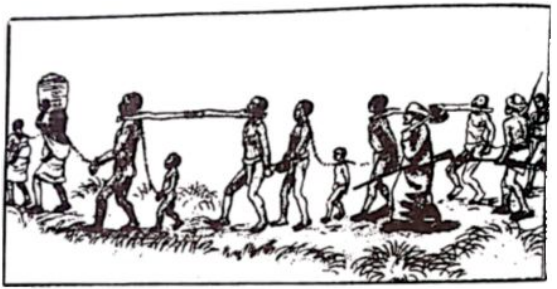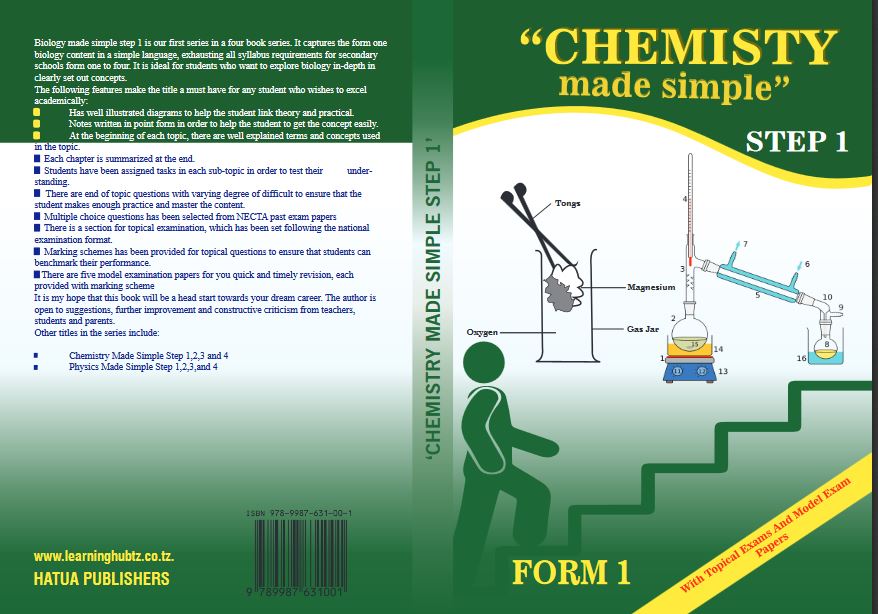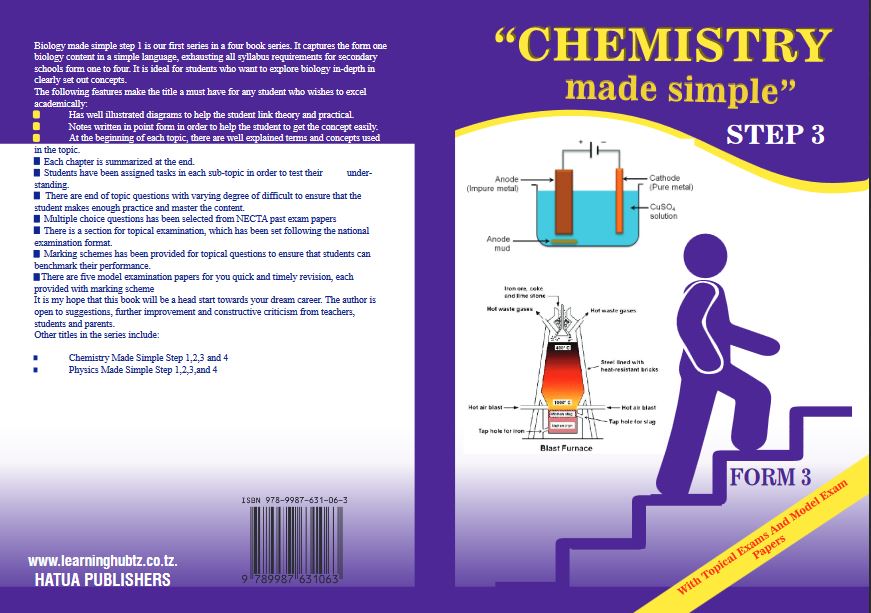FORM TWO HISTORY EXAM SERIES 205
FORM TWO HISTORY EXAM SERIES 205
THE PRESIDENT’S OFFICE
REGIONAL ADMINISTRATION AND LOCAL GOVERNMENT
HISTORY FORM TWO PRE- MOCK EXAMINATION
CODE 012
TIME: 2:30 HOURS
INSTRUCTIONS.
- This paper consists of section A, B and C with the total number of ten(10) questions
- Answer all questions in each section
- Section A carries (15) marks, section B (70) marks and section C carries (15) marks
- All writing must be in blue/black ink except drawing which must be in pencil
- Cellular phones and any unauthorized materials are not allowed in the assessment room.
SECTION A (15 Marks)
Answer all questions in this section
1. For each of the items (i) – (x) choose the correct answer from among the given alternatives and write its letter beside the item number in the answer sheet provided
- Which of the following is NOT a reason why studying history is important?
- To understand present-day events
- To predict the exact events of the future
- To learn from past mistakes
- To gain a sense of identity
- A primary source in history is:
- A textbook written decades after an event
- A journal entry by someone who lived through an event
- A recent documentary film about an event
- A historical novel inspired by an event
- The earliest period of human development, characterized by the use of stone tools, is called the:
- Neolithic Age
- Bronze Age
- Paleolithic Age
- Iron Age
- The development of agriculture marked a major shift in human societies because it led to:
- More nomadic lifestyles
- The development of settled communities
- A decline in population
- Less complex social structures
- Which was a major economic activity in many parts of pre-colonial Africa?
- Large-scale factory production
- Farming
- Stock trading
- Globalized shipping routes
- Some pre-colonial African societies were organized as:
- Kingdoms with centralized power
- Democracies with elected leaders
- Small, family-based groups
- All of the above
- One form of social organization in some African societies was based on:
- Age-grades or sets
- Strictly defined social classes
- Political parties
- Urban and rural divisions
- A major trade route that connected West Africa to North Africa across the Sahara Desert was the:
- Silk Road
- Spice Route
- Trans-Atlantic Trade Route
- Trans-Saharan Trade Route
- Islam spread into parts of Africa through:
- Trade
- Military conquest
- Missionary activities
- All of the above
- Before European colonialism, Africa had contact with which external region?
- The Middle East
- South America
- Australia
- Antarctica
2. Match the mode of production with its most appropriate description.
| Column A | Column B |
|
|
SECTION B: 70 MARKS
3. Briefly explain the following terms;
- Archeology
- Oral traditions
- Museum
- Shift cultivation
- Mixed farming
4. (a) Juma thinks of using archeology in order to study history. Give four challenges he is likely to face
(b) Discovery of iron changed man’s way of life completely. Elaborate this assertion.
5. Name at least two products or items which were made by the following handicraft industries in pre-colonial Africa;
- Iron smelting
- Basketry
- Carpentry
- Pottery.
6. Despite its prominence and flourishing, The Trans-Saharan trade could not last forever. Briefly explain the reason for decline of this trade. Use five points.
7. (a) differentiate between matrilineal and patrilineal clan systems in Africa.
(b) Explain the characteristics of kingship based on the following:
- Economic organization
- Social organization
- Political organization.
8. The Ngoni migration was not beneficial to the people of East and central Africa. Justify this statement.
9. Write short notes on the following:
- Social organization
- Feudal hierarchy
- Slavery
- Primitive communalism
- Rent in kind.
SECTION C: 15 MARKS
10. Explain five effects of the early Arab and Persian settlement on the East African coast up to 1400CE
FORM TWO HISTORY EXAM SERIES 177
FORM TWO HISTORY EXAM SERIES 177
PRESIDENT OFFICE REGIONAL ADMNISTRATION
AND LOCAL GOVERNMENT
SECONDARY EXAMINATION SERIES
COMPETENCE BASED ASSEMENT
HISTORY FORM TWO
TERMINAL EXAMS-MAY – 2023
012
Time: 2:30 Hours
Instructions
- This paper consists of sections A, B and C with a total of ten (10) questions
- Answer all questions
- Section A and C carry fifteen (15) marks each and Section B carries seventy (70) marks
- All writing must be in blue or black in
- All answer must be written in the spaces provided
- Cellular phones, calculators and any unauthorized materials are not allowed in the assessment room
SECTION A (15 Marks)
- For each of the items (i) – (x), Choose the correct answer from the given alternative and write its letter in box provided
- Assume you have asked by your friend that “pebbles, chopping tools and hand axes were used during which age” which of the following will be the correct answer among of the following?
- The late stone age
- The iron age
- The middle stone age
- The early stone age
- The study of languages in order to know their origin and relations of the people who speak them is one of the sources of historical information. In one word identify the name of this source;
- Linguistics
- Anthropology
- Archives
- History
- Which method was used to obtain salt during the pre-colonial era
- Evaporating water from the sea water
- Mining and evaporating reeds
- Mining salt from bearing rocks
- Boiling and evaporating bowls
- Which of the following was an important change in the evolution of man?
- Walking with all four limbs
- Development of the brain
- Walking with fore limbs
- Gathering and hunting
- The student of Mwendapole Secondary School went a visit to special building where historical artifacts and other artistic objects are kept. This building is known as:
- Museum
- Historical site
- Archive
- Archaeology.
- Students from two different schools were arguing to each other the useless of learning history. One of them said there is necessity of learning this subject because of producing different occupation from this subject. What do you think is one of the occupation from history?
- Carbon 14 Dating
- Doctor
- Museum curators
- Chemical engineering.
- There is still no clear evidence showing the origin of discovery of iron. This led to number of theories which are:
- Forest fire theory and mistaken identity theory
- Creation and forest fire theory
- Evolution and mistaken identity theory
- Mistaken theory and copper melting theory.
- A feudal system practiced by Tutsi and Hutu is Rwanda and Burundi
- Nyarubanja
- Umwinyi
- Ubugabire
- Ntemi.
- Which of the following were not among the earthiest visitors in East Africa?
- Portuguese
- Indians
- Chinese
- Burma
- Earlier contact between East Africa and the world was mainly due to:-
- Adventure
- Commerce
- Colonialism
- Religious
- Match the following items.
| List A | List B |
| (i) Vasco Da Gama Reached Malindi (ii) Portuguese landed at West coast of Africa (iii) Bartholomew Diaz reached the Southern Cape of Africa (iv) Set up Navigation school in Portugal (v) Vasco Da Gama returned back to Portugal |
|
SECTION B. (70 MARKS)
ANSWER ALL QUESTIONS
3. Briefly explain the following terms:
(i) Black smiths
(ii) Nomadic pastoralism
(iii) Agents of Industrial capitalism
(iv) The San
(v) Triangular Slave Trade
4. Arrange the following sentences in chronological order by writing their roman numbers in the table provided.
(i) The Portuguese merchants distrubed the gold trade in the early 16th century.
(ii) Now gold was exported to Portugal and other Western countries.
(iii) The deviation of trade brought conflicts between Arab traders and Portuguese merchants.
(iv) As a result, Arab traders with the assistance from Oman Sultanate expelled Portuguese merchants from East Africa coast in the end of 17th century.
(v) Mwanamutapa empire was the main supplier of gold to Arab traders based at Sofala.
5. Complete each of the following statements by filling the blanks with the correct historical facts.
i. . . . . . . . . ..is the scientific knowledge that is used practically.
ii. . . . . . . .involves telling of stories about people and events in the past which can be in form of epics and myths.
iii. The short stabbing spears was known as . . . . . . . . . . . .
iv. The brain capacity of Homo sapiens was about . . . . . . to . . . . . .
v. Between 1698 and 1840 the east African coastal trade was dominated by. . . . .
6. Draw the sketch map of Africa and show the following kingdoms
A. Luba empire
B. Lozi kingdom
C. Kingdom of Mwantayamvo
D. Mwanemutapa kingdom
E. Zulu kingdom
7.Study this drawing and answer the questions that follow;

i. Which trade in west Africa expanded in the 19th Century due to the introduction of the means of transport shown in the drawing?
ii. Why the type of animals shown on the drawing was preferred by the traders as the means of transport across the desert?
iii. Which Trade led to the decline of the type of the trade that used the animals shown in the drawing?
iv. Name the earliest kingdom in the western Sudanic zone which expanded due to the trade named in (i) above
v. Through which desert was the long distance trade linking west Africa and North Africa using the animals shown on the drawings conducted?
8. Write five causes of Ngoni Migration.
9. During pre-colonial and colonial rule they were emergence of varies state formation in Africa. List five factors for state formation in East Africa.
SECTION C 15 MARKS
10. What were the social factors for interactions in Pre-colonial African communities? (Give six points)
FORM TWO HISTORY EXAM SERIES 147
FORM TWO HISTORY EXAM SERIES 147
THE PRESIDENT’S OFFICE
MINISTRY OF EDUCATION, REGIONAL ADMINISTRATION AND LOCAL GOVERNMENT
SECONDARY EXAMINATION SERIES
HISTORY MID TERM EXAMINATION
FORM TWO-2021
Time: 2:30Hours
Instructions.
- This paper consists of section A, B and C with a total of 10 questions
- Answer all questions in section A and B and TWO questions from section C.
- Section A carries 40 marks, while section B and C carries 30 marks each.
- All answers should be written in the spaces provided.
- All communication devices, calculators and any unauthorized material are not allowed in examination room.
- Write your number on every page of your answer booklet.
SECTION A (35 Marks)
Answer All questions in this section.
- For each of the items (i)-(x), choose the correct answer from the alternatives given.
- The method of collecting historical information through talking and listening to elders is called:
- archaeology
- archives
- museums
- oral traditions
-
 People whose work is to study and explain the remains which show mans physical development, his activities and the tools he made and used are known as:
People whose work is to study and explain the remains which show mans physical development, his activities and the tools he made and used are known as:
- Archaeologists
- Evolutionists
- Biologists
- Homo Sapiens
- In which century was the Zanzibar slave market closed?
- 2nd century
- 18th century
- 19th century
- 20 th century
- Three of these kingdoms are closely related. Which one of them is not?
- Ghana
- Mali
- Buganda
- Songhai
- One of the problems of written records as a source of historical information is that, they:
- are given by elders

- are mostly reliable
- can be used by literate people only
- serve as stores of variety of information
- The economic factors for interactions among the people of Africa were:
- immigration, intermarriage and language
- need for new land, trade and agriculture

- trade, intermarriage and language
- war, trade and migration.
- The Maasai did not have chiefs because they:
- believe in God as their only chief
- did not know that chiefs were good
- trusted their warriors
- moved in different directions looking for pastures
- The origin of the Ngoni speaking people is historically believed to be in:
- Kimberley in South Africa
- Natal in South Africa
- Pretoria in South Africa
- The following were some of the centralized city states of West Africa:
- Bunyoro, Buganda and Toro
- Cape, Nyamwezi and Karagwe
- Oyo, Ife and Benin
- Sofala, Mombasa and Lamu
- The centralised states of East and Central Africa were mostly expanded by:
- colonizing
- conquest
- culture
- taxation
2. Match the items in list A with the correct response in list B by writing the letter of the correct answer
| LIST A | LIST B |
|
|
3. Write True for the correct statement and false for the incorrect statement beside the item number.
- Machemba led yao in resisting Germany rule
- Colonial education was a technique used to obtain labour
- Colonial economy aimed at benefiting Africans
- British administrators were also labourers in their plantation
- Mozambique and Angola achieved its Independence in 1975
- Hehe resistance was led by Mkwavinyika
- MajiMaji was caused by forced labour taxation and land alienation
- Shona and Ndebele took arms against the British in 1896-97
- Imperialism defined as the highest stage of capitalism
- Scramble and partition was done during Berlin conference
4. Briefly explain the following:
- Evolution .................
- Patrilineal society ..........
- Communalism ...........
- Afrikaans ............
- Mansa Musa . .....
SECTION B (30 Marks) Answer all questions in this section.
5. Arrange the following sentences in chronological order by writing their roman numbers in the table provided.
- In this struggle, man continually learns how to design and fashion better tools
- In so doing, he developed science and technology
- History describes man struggle to master his environment
- History shows the changing relationship between man and man in the course of material production.
- For example the people who lived in Engaruka long time ago controlled their environment by adopting irrigation and terracing.
6. Complete each of the following statements with correct historical facts.
(i) Collective ownership of the major means of production is one of the characteristics of …………………………
(ii) A building in which objects of artistic, cultural, historical or scientific interest are kept and shown to the public is called …………………………
(iii) Triangular trade was also known as …………………………
(iv) A duration of one hundred years is called …………………………
(v) The title of a chief among the Hehe was called …………………………
7. Study the figure below and answer the question that follows

(a) The people who are chained shown in the drawing are called …………………………
(b) In which year was the last treaty to stop the business shown on the diagram signed in East Africa? …………………………
(c) Where was the greatest market in East Africa for the chained people shown on the diagram? …………………………
(d) Which European country championed to stop the business shown on the diagram? ………………………… (e) Which was the first European country to conduct the business shown on the diagram in Africa? …………………………
SECTION C (30 MARKS)
Answer two (2) questions from this section.
8. Explain six effects of the Great Trek in South Africa.
9. “East Africa was affected by the coming of Oman rulers in Zanzibar form 1840s”. Discuss this statement by giving six points.
10. Discuss the impact of the Dutch settlement at the Cape by giving six points.
FORM TWO HISTORY EXAM SERIES 59
FORM TWO HISTORY EXAM SERIES 59
THE PRESIDENT’S OFFICE MINISTRY OF EDUCATION, LOCAL ADMINISTRATION AND LOCAL GOVERNMENT
HISTORY- TERMINAL EXAMINATION-MAY
FORM TWO
TIME: 2HRS 2020
NAME:__________________________________CLASS:___________
INSTRUCTIONS:
1. This paper consist of sections A, B and C
2. Answer ALL questions in question A and B and TWO questions from section C
3. Write your full names at the top of every page
4. All answers must be written in the spaces provided.
SECTION A (40 Marks)
1. For each of the items ( i) to (x) choose the correct answer from among the given alternatives and write its letter beside the item number.
(i) A state in which people from one community got in to contact with one another.
- Communication.
- Contacts.
- Trade.
- Interaction.
(ii). The North African people were interacting with people from West Africa mainly through.
- Indian Ocean.
- Transition.
- Trans-continental trade.
- Trans-Saharan trade.
(iii) One of the outcomes of Boers trek in South Africa was
- The discovery of Black continent.
- The rise of mfecane war.
- Colonization of South Africa.
- The discovery of minerals.
(iv) The famous societies which involved in long distance trade in East Africa were:
- Kamba, Makonde and Yao.
- Chagga, Maasai and Meru.
- Kikuyu, Somali and Galla.
- Yao, Kamba and Nyamwezi.
(v) The following is the importance of Trans-Saharan trade to Western Sudan:
- It helped to introduce new ideas.
- It helped empires to emerge in Western Sudan.
- It helped to introduce Islamic civilization.
- All the above.
(vi)A major step in the series of economic process that bring goods and services to the people.
- Industry.
- Production.
- Primitive.
- Market.
(vii) The Dutch who settled in South Africa were from
- Oman.
- Holland.
- France.
- Germany.
(viii) The early development of animal and plant domestication.
- Revolution.
- Neolithic Revolution.
- Agriculture.
- Carbon 14 method.
(ix) The following are functions of a Moran, except.
- To protect the whole society.
- To control religion and solve conflicts.
- To defend and protect the protectorate.
- To travel in search of water and grases.
(x) A rulling system in which two or more communities or governments rule the same territory and people is known as;
- Power separation.
- Power sharing.
- Self-rule.
- Democracy.
2. Match the items in LIST B with those provided in LIST A by writing correct number in the space provided
| LIST A | LIST B |
| (i). Trans- Saharan trade (ii) Basic needs (iii) Communalism (iv) Boer Expansion (v) Slavery (vi) Interaction (vii) Cow horn formation (viii) Feudalism. (ix) 200 BC. (x) Mixed farming . |
|
| LIST A | A | B | C | D | E | F | G | H | I | J |
| LIST B |
|
|
|
|
|
|
|
|
|
|
3. Write TRUE if the statement is correct and FALSE if the statement is not correct
- The Ngoni brought war and disrupted trade activities to a peaceful areas ______
- Zwangandaba was a tribal leaders in Tanzania who organized long distance trade_______
- The Ngoni did not bring any effect to East African societies_______
- The social factors for interaction among the people of Africa resulted into population increase_______
- Rusinga Island and Nsongezi are famous historical sites found in Kenya_______
- Before the colonial period, all the societies in East Africa were patrilineal_______
- Clan was a basic unit of production_______
- Agriculture is an economic activity of growing of crops_______
- Khoisan, Dorobo, Sandawe, Kiko, Hadzabe and Tindiga are some African societies which are still practicing feudalism________
- The form of feudalism that existed along the East African Coast was known as Umwinyi______
4. Give the meaning of each of the following terms
- Social organisation
- Historical sites
- Slave
- Communalism
- Barter trade
SECTION B. ( 30 Marks).
Answer all questions in this section
5. Arrange the following sentences in a chronological order by writing their Roman numbers in the table provided.
- These caves were usually near sources of water
- These activities have earned them the name " early hunting and gathering"
- They mainly live temporally in caves
- They ate raw food like meat and fruits because they did not know how to make fire.
- During this period people did not have permanent shelters.
ANSWERS
| 1ST | 2ND | 3RD | 4TH | 5TH |
|
|
|
|
|
|
6. Complete each of the following statements with the correct historical facts
i. The man's major technological inovation during the middle stone Age was ____________
ii. The tittle of the supreme political leader in the Haya was _______________
iii. A place where books, files, colonial and travellers records are kept is calles _______________
iv. The process by which people create goods to satisfy their needs is ___________________
v. The ownership and use of slaves in economic priductuon ____________________
7.a) What is agriculture?
b) Explain in short different types of agriculture development in Africa societies.
SECTION B. ( 30 Marks)
8. Write an essay about the effects of the economic interactions among the African
9. Write a short essay on Ngoni migration under the following guidelines
- Meaning
- Participants
- Causes
- Effects.
- Conclusion
10. Explain the characteristics of communalism mode of production
FORM TWO HISTORY EXAM SERIES 16
FORM TWO HISTORY EXAM SERIES 16
Hub App
 For Call,Sms&WhatsApp: 255769929722 / 255754805256
For Call,Sms&WhatsApp: 255769929722 / 255754805256
 For Call,Sms&WhatsApp: 255769929722 / 255754805256
For Call,Sms&WhatsApp: 255769929722 / 255754805256







